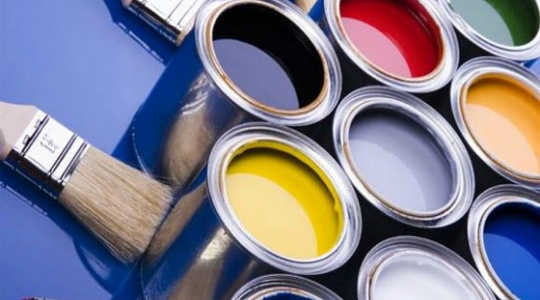
The bulk of the products were in the category of household paints and primers, using the chemicals as fragrance under brand names like X-O Rust, Premium Décor, and Start Right. (Photo: //www.flickr.com/photos/99781513@N04/14221882315">Scott Lewis/flickr/cc)
A new report puts the spotlight on the widespread use of toxic chemicals known as phthalates, finding them in products from paints to shoelaces to greeting cards.
The report, What Stinks? Toxic Phthalates in Your Home (pdf), used data submitted to the Maine Department of Environmental Protection, as the New England state requires manufacturers to disclose their use of four kinds phthalates.
"This data provides new examples of products that are letting these hormone-assaulting chemicals infiltrate our bathrooms, kitchens, schools--and, ultimately, our bodies," said Mike Belliveau, executive director of the Maine-based Environmental Health Strategy Center and Prevent Harm, lead sponsors of the new report.
"Because of the breadth of reporting that Maine requires," according to the report, "the data reported includes never- before available information."
The reports lays out what's at stake from exposure thusly: "Strong science shows that even at very low levels of exposure, phthalates—a class of more than 40 closely related chemicals--are linked to reproductive harm, learning disabilities, and asthma and allergies."
Fourteen manufacturers reported the use of the four phthalates in 130 products, the report states. The chemicals are often used to soften vinyl plastic--that was the case in over one-third of the products reported—but for over half of the products, phthalates were used as fragrance.
The bulk of the products, 47 of the 130, were in the category of household paints and primers, using the chemicals as fragrance under brand names like X-O Rust, Premium Décor, and Start Right.
Clothing manufacturers like Gap, Inc. reported the chemicals being used to soften plastic in products like shoelace and drawstring aglets, while other manufacturers like 3M reported them for other purposes in products like their reusable adhesive tabs.
The fact that the report provides new information should not be the case, the authors write. It's because "Our nation's chemical safety system is badly broken. Chemical ingredients in most household products are kept secret, leaving consumers to wonder which products are actually safe."
The report cites Bangor, Maine resident and mother of two Paige Holmes as saying, "Why aren't manufacturers required to tell us what’s in everything they make? Why are phthalates still in use in this country? Trying to protect my family shouldn't be this difficult."
“To protect public health," Belliveau added, "manufacturers and retailers should move quickly to replace phthalates with safer substitutes."
The report was co-sponsored by Safer Chemicals, Healthy Families and Safer States, Breast Cancer Fund, Ecology Center, Healthy Babies Bright Futures, and Women's Voices for the Earth.
This article originally appeared on Common Dreams
About The Author
Andrea Germanos is senior editor and a staff writer at Common Dreams.
Related Books
at InnerSelf Market and Amazon
























